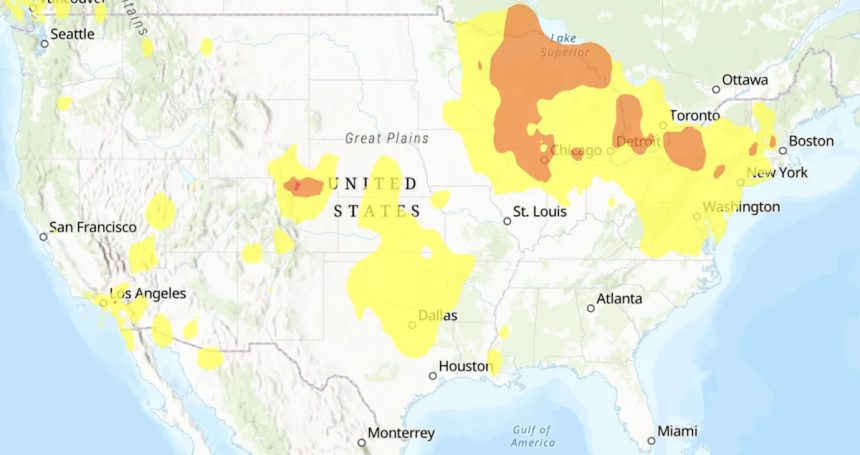Smoke from ongoing wildfires across Canada continued to drift into parts of the United States on Wednesday, causing hazy skies and triggering air quality alerts in multiple states across the upper Midwest and Northeast.
Air quality alerts were in effect Wednesday morning from the National Weather Service in parts of the following states: Minnesota, Wisconsin, Illinois, Michigan, New York, Vermont, New Hampshire, Massachusetts, Pennsylvania and Delaware.
As of Aug. 6, there are about 750 active Canadian wildfires, with at least 190 labeled “out of control,” according to the Canadian Interagency Forest Fire Centre. More than 16 million acres (6.8 million hectares) of land have been scorched this year, making this one of Canada’s worst wildfire seasons on record.
The Air Quality Index map
The Air Quality Index is used nationwide to measure how severe the air pollution is within a given area and has these six ratings:
-
Unhealthy for sensitive groups
An Aug. 6 map of the Air Quality Index indicated “moderate” ratings in parts of the Midwest and Northeast, as well as “unhealthy for sensitive groups” around the Great Lakes region.
What to be aware of during an air quality alert
The NWS advises the following during an air quality alert:
-
If it’s possible, stay indoors, particularly for seniors, children and those with respiratory concerns or other health problems.
-
If you must go out, try to limit the amount of time outside to essential activities.
-
Minimize the use of cars, gas-powered lawn mowers and other vehicles that can increase pollution.
-
Don’t burn debris or other items at this time.
Why is wildfire smoke a health concern?
Wildfire smoke is a health concern, particularly for sensitive groups, because it contains tiny and dangerous pollutants that can “affect the lungs and heart and cause serious health effects,” according to the Environmental Protection Agency.
Short-term exposure to wildfire smoke can lead to respiratory effects, such as bronchitis or reduced lung function, or cardiovascular effects like a heart attack or stroke, as outlined by the EPA.









